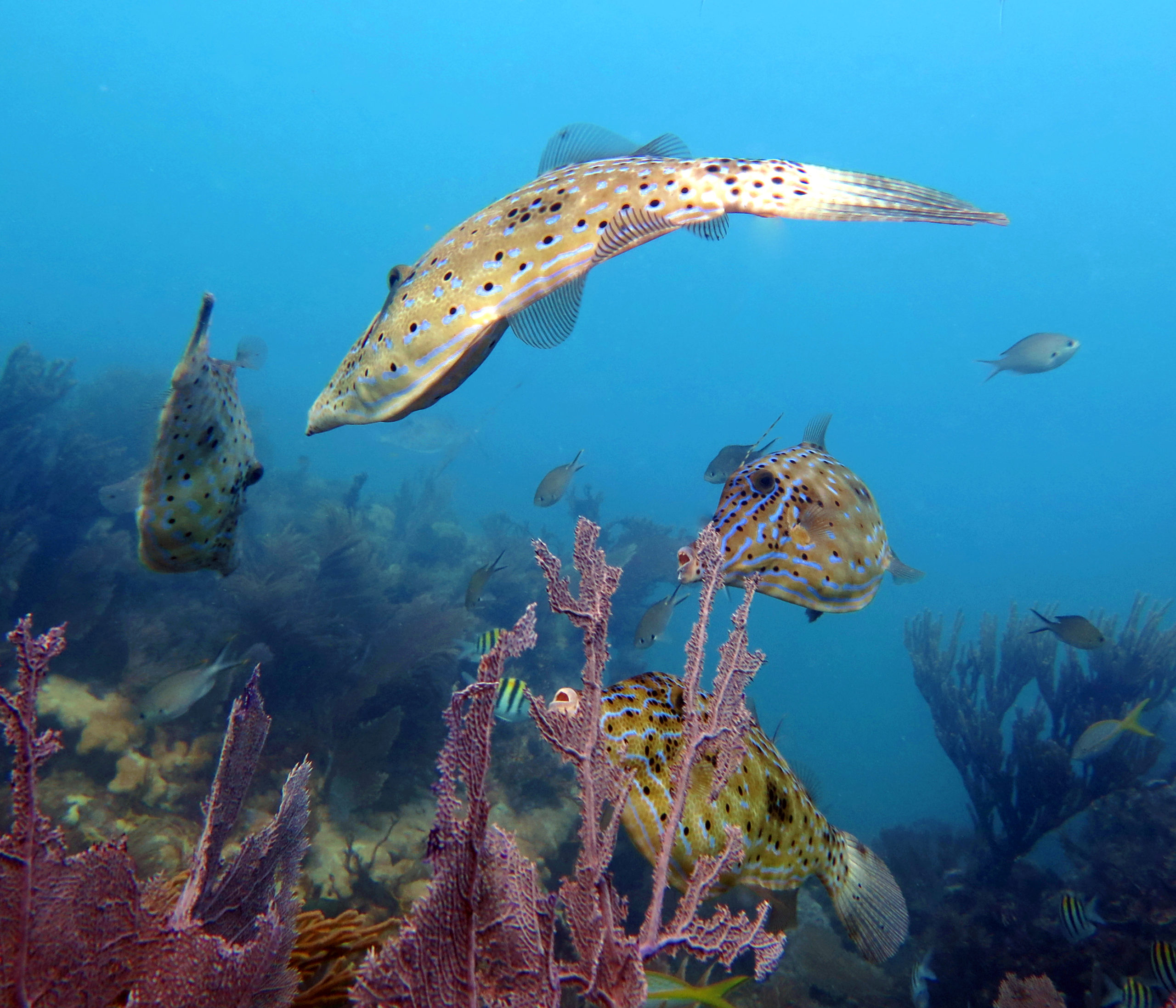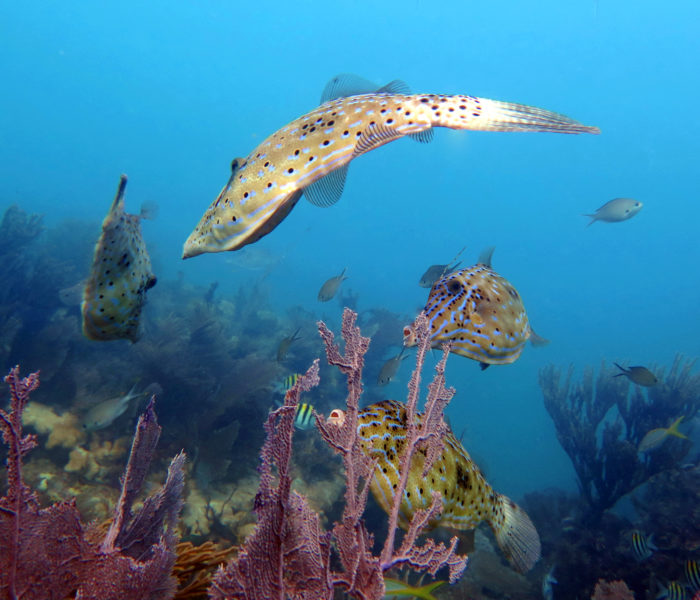
Sea Wonder: Scrawled Filefish
The scrawled filefish (Aluterus scriptus) is a diver favorite due to their bright colors and approachability. They are part of the filefish family, a family of nearly 100 species of similar fish, many of which are found off the coasts of Australia. This particular species calls the waters of the Caribbean and Latin America, as well as Africa’s west coast and the waters between east Asia and Australia home.
Appearance
Scrawled filefish are named for the seemingly random patterns found along their bodies, which look like they have been drawn on with a brightly colored pen; the latter half of their scientific name — scriptus — even translates to “written”!
These fish are diamond-shaped with fairly flat, elongated bodies marked at the front by a pronounced, upturned mouth and at the back by a dorsal fin. Their primary coloration ranges from pale gray to olive-brown (and they can change colors depending on their surroundings) with irregularly placed bright blue lines and black dots all over their bodies. Their scales are small and rough, and their texture may explain how they came to be called filefish. The front dorsal fin on their back is often relaxed but can stand upright in times of trouble, and the tailfin is long and rounded with a ragged back edge.
When fully grown, scrawled filefish usually reach a length of 22 to 36 inches but have been observed at a maximum length of 43 inches. They generally only weigh a few pounds, but the heaviest scrawled finfish weighed in at more than 5.5 pounds!
Diet and Habitat
Scrawled filefish live in multiple environments in the Atlantic, Pacific, and Indian oceans. They can be found from Nova Scotia in Canada down to Brazil, throughout the Gulf of Mexico and Gulf of California, between South Africa and Cape Verde, Africa, and from southern Japan through the Great Barrier Reef. They have been observed in habitats in tropical and subtropical waters like lagoons, coral reefs, and seagrass beds, as well as on shipwrecks and floating along with mats of sargassum seaweed. They can swim as deep as nearly 400 feet but are usually found in waters 10 to 60 feet deep. National marine sanctuaries in or near which we might find scrawled filefish include Stellwagen Bank, Monitor, Gray’s Reef, Florida Keys, and Flower Garden Banks.
Filefish are omnivorous grazers that feed on algae, phytoplankton, anemones, seagrass, hydrozoans, gorgonian coral, and tunicate worms. They will hunt when food is plentiful rather than only during the day or nocturnally like other species of marine animals. They serve as prey for larger fish like mahi-mahi and bluefin tuna. They are also commonly parasitized by copepods and worms. When scrawled filefish are threatened by predators, they will sometimes hide in crevices created by the environment and erect spines on their back and belly to wedge themselves in and make removing them from their hiding spots very difficult.
Life History
Scrawled filefish are usually solitary animals except for their breeding seasons, when they gather in small groups of one or two males and between two and five females. Females lay eggs in depressed areas on the ocean floor and the males fertilize them. Both males and females will guard the nest from predators during incubation, but females care for the hatched fish. Scientists think reproduction can take place multiple times per year (mostly during times in which food is plentiful) due to the year-round warmth of the waters in which they live.
These fish aren’t migratory and are popular with SCUBA divers and aquarium hobbyists because they are slow moving, not easily startled, and colorful.
Threats and Conservation
While scrawled filefish are not fished commercially and are not seen as endangered or vulnerable, their habitats and ecosystems are at risk from a number of anthropogenic threats. We can help protect these beautiful fish and the species in their ecosystems from becoming vulnerable or endangered by choosing responsibly sourced seafood, reducing our energy consumption, using fewer fertilizers and other chemicals on our lawns and gardens, and encouraging our elected officials to support policies that address ocean acidification, ocean warming, and species protection.

